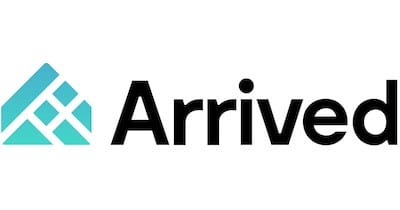Millennial investors who engage in early retirement planning and take advantage of a 401k plan in their twenties give themselves a great opportunity to retire at a younger age and with a large sum of money. Early retirement planning for millennial investing is one of the wisest decisions you can do in your 20s.
The biggest impact on the size of your retirement nest egg is time. A majority of people generally do not start getting serious about early retirement planning until their thirties or forties. While savings rate and investment selection are primary aspects of saving for retirement, the most important factor is time because of the power of compounding interest.
For millennial investors fortunate enough to engage in early retirement planning by starting a 401k plan in their twenties, the combination of savings rate, investment selection and time can add up to millions saved by retirement age. With those key aspects of retirement success in mind, here are crucial steps for any millennial managing a 401k and who are trying to save early for retirement.
Let's learn about the best ways to learn about investing.
How To Retire Early
Stuck wondering how to retire early with early retirement strategies? Stop searching Google for:
- early retirement calculator
- how to retire early at 55
- can i retire early
- how to retire early at 45
- how to retire early at 40
- ways to retire early
- how to retire early at 60
- early retirement withdrawal strategies
- how to retire early with no money
You can use the following steps and tips below to help you hone an early retirement strategy that works.
1. Figure Out Your Essential Savings Rate
When completing the 401k enrollment forms, there are two primary decisions to make: The first is how much you want to save each pay period, which is called a “deferral,” and the second is how you want to invest that money.
So let’s cover that first decision: How much is a good amount of money to save or invest in a 401(k) plan? There is not a number that will work for each individual person, but the short answer is to SAVE as much as you are able too (without hurting other areas of your finances.)
One key factor in how much you want to contribute, or deferral percentage, it is regularly encouraged to contribute to the plan at least up to the point where you can gain the maximum match to which you are entitled.
In most cases, gaining the match can be as straightforward as contributing a certain percentage all year. For example, if the employer matches 50% of an employee's contributions up to 6% of the employee's salary, then an employee who regularly contributes 6% of her $100,000 salary all year will gain a $3,000 match on her $6,000 of contributions.
Also, keep in mind that it’s easier to adjust your deferral percentage to a lower amount than it is to adjust higher. Therefore, start as high as possible. For example, try starting at 10%, and if that’s too high you can adjust it lower.
2. Calculate Your Amount of Risk
Once you’ve decided how much to contribute to your 401k retirement fund, you’ll need to make the best investment selections for you (or sign up for programs that help like the Motley Fool Stock Advisor Program).
You may have already heard that it is wise to invest aggressively in your early saving years and then gradually shift to a more conservative mix of investments as you get closer to retirement age. While this is generally true, the best investments for retirement also depend upon how much risk you can tolerate.
Put differently, there are two basic risk measurements for young investors to consider before choosing investments:
- Risk Capacity: This is a measure of how much risk you can afford to take. When you’re in your twenties, you can afford to take more risk, because you presumably don’t need to touch your retirement nest egg for 20, 30 or even 40 years. So when your investments decline in value during market corrections, there’s no real threat to your financial security because you don’t need your 401k or IRA savings for many years.
- Risk Tolerance: This is a measure of how much risk you are comfortable taking. So, even though it is true that younger investors can afford to take more risk, you don’t want to lose sleep at night worrying about falling stock prices and potentially jeopardize your investment objectives by selling your 401k mutual funds in a down market.
After you have assessed your risk tolerance, you can choose the best 401k investments for you. If you’re still not sure how to invest, you might try a moderate allocation of roughly two-thirds stock mutual funds and one-third bond mutual funds.
Above all, be sure to diversify your investments by allocating your 401k money to several different funds. Somewhere between three and five funds should do the trick.
- Averaged Stock Pick Return over 318% (vs 114% for the S&P)
- 2 New Stock Picks Every Month
- 700,000+ Loyal Members
- Smarts' Reader Deal: Special $79 Stock Advisor Introductory Offer
3. Do Not Underestimate the Time Value of Money
Time makes the biggest impact on retirement savings because of compounding interest, which is essentially interest (or dividends and gains) that go to buy more shares of investments, such as stocks and mutual funds, which will then grow and earn more interest, as the process repeats itself.
Consider this example of two different investors:
- Investor No. 1 starts contributing $5,000 per year in a 401k at age 25 and continues with the same savings rate for 10 years. She stops saving but allows her portfolio to continue growing another 30 years, to age 65. Her total savings amount is $50,000. Assuming a 7% rate of return, Investor No. 1 ends up with $585,000.
- Investor No. 2 starts saving $5,000 at age 35 and continues the same savings rate until age 65. That’s a total of $150,000 savings for him. Assuming the same 7% rate of return, Investor No. 2 ends up with about $508,000.
Therefore, thanks to the power of compound interest, Investor No. 1 ended up with a much bigger nest egg, even though she only saved for 10 years, whereas Investor No. 2 was never able to catch up, even after 30 years of saving, because he started later. Early retirement planning does make a difference.
As you continue saving in your 401k plan and continue early retirement planning, the basic maintenance requirements are only to periodically rebalance the portfolio and increase your 401k deferral percentage whenever you get a pay raise. Rebalancing effectively returns the mutual fund balances to their original target allocations. Once per year is sufficient frequency for rebalancing.
4. Optimize Your Retirement Account
You should know about blooom if you have a 401k. Blooom will analyze your 401k for free and in under 5 minutes blooom can do all of the below:
- Show you how well you are invested
- Pick the best funds available in your 401k and give you exact percentages of what to invest where
- Show you exact percentages on how many stocks vs. bonds to have
- Show how much you are paying in investment fees and how to potentially pay less (average bloom client cuts their fees in half)
For someone who doesn’t know how well their 401k is invested or would benefit from professionals analyzing it, it’s pretty powerful. You can make thousands of dollars easily over the long term just by getting a free 401k analysis here. More people should be doing this.
Want to Retire Early? It's Possible!
As of the second quarter of 2018, Millennials — which Fidelity defined as those ages 21 to 37 — with 401(k)s had an average balance of $25,500 and were contributing 7.3% of their paychecks. Fidelity also found that employers were matching, on average, 4.1%, which put the total top savings rate for millennials with 401(k)s at 11.3 percent.
How do you stack up?
To summarize, there are only three real mistakes you can make with a 401k plan:
- Not contributing or starting early retirement planning today.
- Putting all of your money in just one fund. (Putting all your eggs in one basket)
- Not looking into companies like blooom that will professionally analyze your 401k. You can make thousands of dollars easily over the long term just by getting a free 401k analysis here.
So contribute as much as your finances can withstand and diversify your portfolio and start early retirement planning today!
Arrived lets you invest in residential real estate and vacation rentals with only $100. It's an excellent option for anyone looking to earn passive income with rental units. And the platform is available to non-accredited investors.

